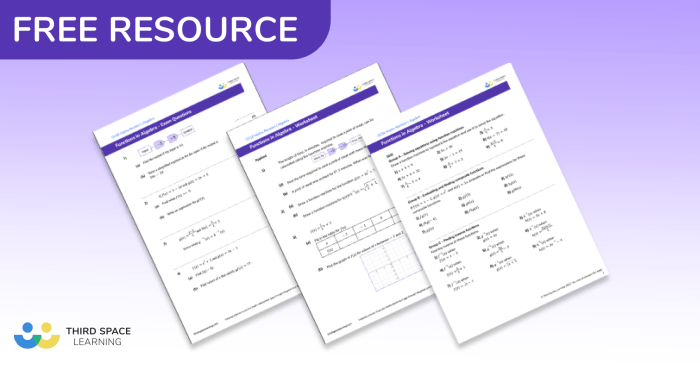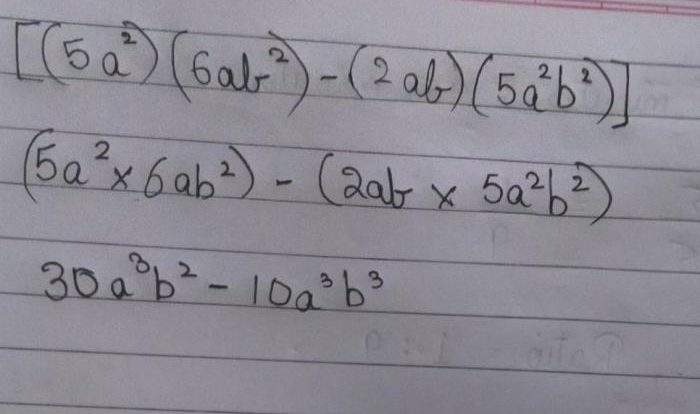Lesson 3 Homework Practice Functions embarks on a journey through the fundamental concepts of functions, guiding students towards a comprehensive understanding of their mathematical significance and applications.
This lesson delves into the intricacies of functions, their evaluation, graphing techniques, and operations. It culminates in exploring function composition and inverse functions, equipping students with a robust toolkit for mathematical exploration.
Functions
A function is a relation between a set of inputs and a set of outputs, with the property that each input is associated with exactly one output.
Functions are often represented using the notation f( x), where fis the name of the function and xis the input variable. The output of the function is denoted by f( x).
Domain and Range
The domain of a function is the set of all possible input values. The range of a function is the set of all possible output values.
Function Evaluation and Graphs
Functions are mathematical relationships that assign a unique output value to each input value. Evaluating a function means finding the output value for a given input value. Graphing a function involves plotting the input and output values as points on a coordinate plane and connecting them to form a curve.
Evaluating Functions
To evaluate a function at a given input value, simply substitute the input value into the function’s expression and simplify the result. For example, to evaluate the function f(x) = x^2 + 2x – 3 at x = 2, we would substitute 2 for x in the expression:
f(2) = (2)^2 + 2(2)
- 3 = 4 + 4
- 3 = 5
Graphing Functions
To graph a function, we first create a table of values by evaluating the function at several input values. Then, we plot the input and output values as points on a coordinate plane. Finally, we connect the points with a smooth curve to create the graph.
Relationship Between Graph and Properties
The graph of a function can reveal important information about its properties. For example, the slope of the graph indicates the rate of change of the function, while the y-intercept indicates the value of the function when the input is zero.
Additionally, the graph can show whether the function is increasing, decreasing, or constant over different intervals.
Function Operations
Function operations are mathematical operations that can be performed on functions. These operations include addition, subtraction, multiplication, and division. Function operations allow us to combine functions to create new functions.
Adding and Subtracting Functions, Lesson 3 homework practice functions
Adding and subtracting functions is a straightforward operation. To add two functions, we simply add their outputs for each input. To subtract two functions, we subtract the output of the second function from the output of the first function for each input.
$$(f+g)(x) = f(x) + g(x)$$$$(f-g)(x) = f(x)
g(x)$$
Multiplying and Dividing Functions
Multiplying and dividing functions is also a straightforward operation. To multiply two functions, we simply multiply their outputs for each input. To divide two functions, we divide the output of the first function by the output of the second function for each input.
$$(f\cdot g)(x) = f(x) \cdot g(x)$$$$(f/g)(x) = f(x) / g(x)$$
Properties of Functions under Operations
Functions have certain properties under operations. These properties include:
- The sum of two functions is a function.
- The difference of two functions is a function.
- The product of two functions is a function.
- The quotient of two functions is a function, provided that the denominator is not zero.
Function Composition and Inverse Functions: Lesson 3 Homework Practice Functions

Function composition and inverse functions are important concepts in mathematics that extend the functionality of functions and provide insights into their relationships.
Function Composition
Function composition is the process of combining two or more functions to create a new function. The composite function, denoted as (f∘g)(x), is defined as f applied to the output of g, i.e., (f∘g)(x) = f(g(x)).
- The domain of (f∘g) is the set of all x in the domain of g such that g(x) is in the domain of f.
- The range of (f∘g) is the set of all values that (f∘g)(x) can take.
Inverse Functions
An inverse function is a function that undoes the operation of another function. For a function f, its inverse function, denoted as f^-1(x), is defined as the function that satisfies the equation f(f^-1(x)) = x and f^-1(f(x)) = x.
Not all functions have inverse functions. A function must be one-to-one, meaning each element in its range corresponds to a unique element in its domain, to have an inverse function.
Homework Practice Problems
This section provides practice problems that cover the concepts of functions, function evaluation, function operations, and function composition. These problems are designed to reinforce the understanding of these concepts and to develop problem-solving skills.
The practice problems include a variety of problem types, including multiple choice, short answer, and extended response. Detailed solutions to the practice problems are also provided.
Function Evaluation
Function evaluation involves finding the value of a function for a given input. Practice problems in this section will require you to evaluate functions for specific values of the input variable.
- Find the value of the function f(x) = 2x + 1 when x = 3.
- Evaluate the function g(x) = x^2 – 4 when x = -2.
- Given the function h(x) = (x – 1)/(x + 2), find h(-1).
Function Operations
Function operations involve performing operations such as addition, subtraction, multiplication, and division on functions. Practice problems in this section will require you to perform these operations on functions and simplify the resulting expressions.
- Find the sum of the functions f(x) = x^2 and g(x) = 2x.
- Subtract the function h(x) = 3x + 1 from the function g(x) = x^2 – 2x.
- Multiply the functions f(x) = x – 1 and g(x) = x + 2.
Function Composition
Function composition involves combining two or more functions to create a new function. Practice problems in this section will require you to compose functions and determine the domain and range of the resulting function.
- Find the composition of the functions f(x) = x^2 and g(x) = x + 1.
- Determine the domain and range of the function h(x) = f(g(x)), where f(x) = x^2 and g(x) = x – 2.
- Compose the functions f(x) = 2x – 1 and g(x) = x^2 + 1.
Helpful Answers
What is the domain of a function?
The domain of a function is the set of all possible input values for which the function is defined.
How do you find the inverse of a function?
To find the inverse of a function, you need to swap the roles of the input and output variables and solve for the new input variable.
What is the difference between a function and a relation?
A function is a relation where each input value corresponds to exactly one output value, while a relation can have multiple output values for a single input value.


